 Dan Burrill
.
February 16, 2023
.
All Feature Vehicles
Dan Burrill
.
February 16, 2023
.
All Feature Vehicles
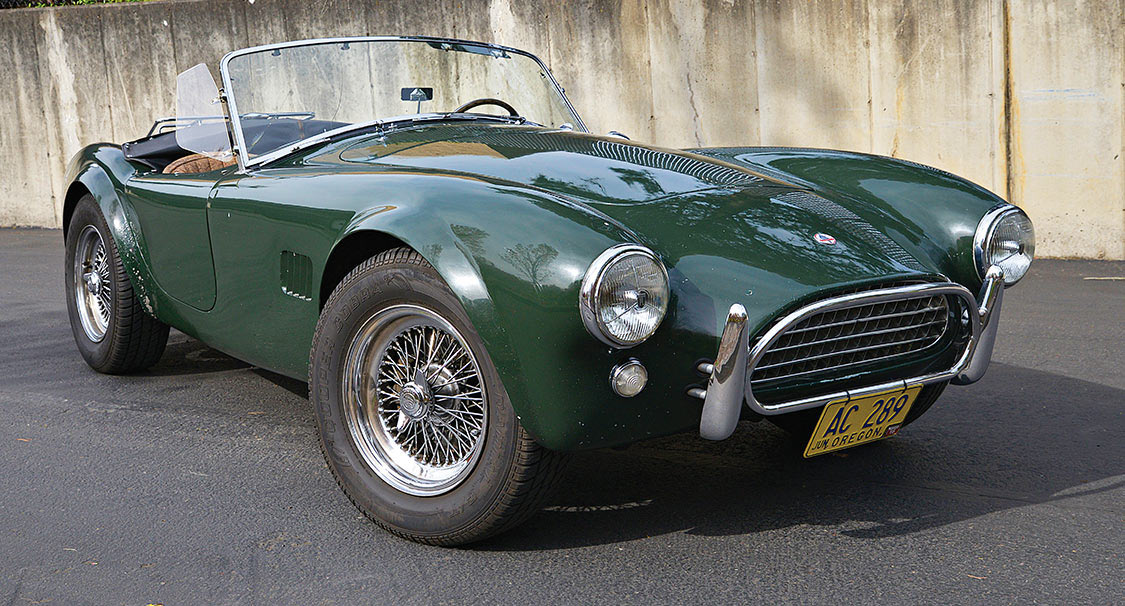
According to the World Registry of Cobras and GT40s, published by Kopec/Eber Publishing, LLC, the story of this great little “sport car,” as Carroll Shelby used to say, began with an AC Cobra about a half century ago. AC chassis #2182 was billed to Shelby America on September 3, 1963 and shipped to Los Angeles from England in October of that year aboard the “SS Dongedyk.”
The car was then invoiced to Coventry Motors, Inc. in Walnut Creek, California. By the time the car got to Coventry Motors, it was Vineyard Green, and the interior is beige leather. The car featured several Class A accessories, including chrome rocker covers, white sidewall tires and a luggage rack. The small Ford V8 had been fitted with two 4V carburetors and a manifold assembly, plus a large competition oil pan, for a total of $5739.05. That was a lot of money in 1963. The brand-new Corvette Sting Ray cost just $4,038 in that year.
Once the car was finished it was picked up at Shelby American by the original owner, Dr. Harmon Holvorson from Emmett, Idaho. (In 1966 Dr. Halverson bought another Cobra, a 427 CS 63114, so for a time he owned one of each.)
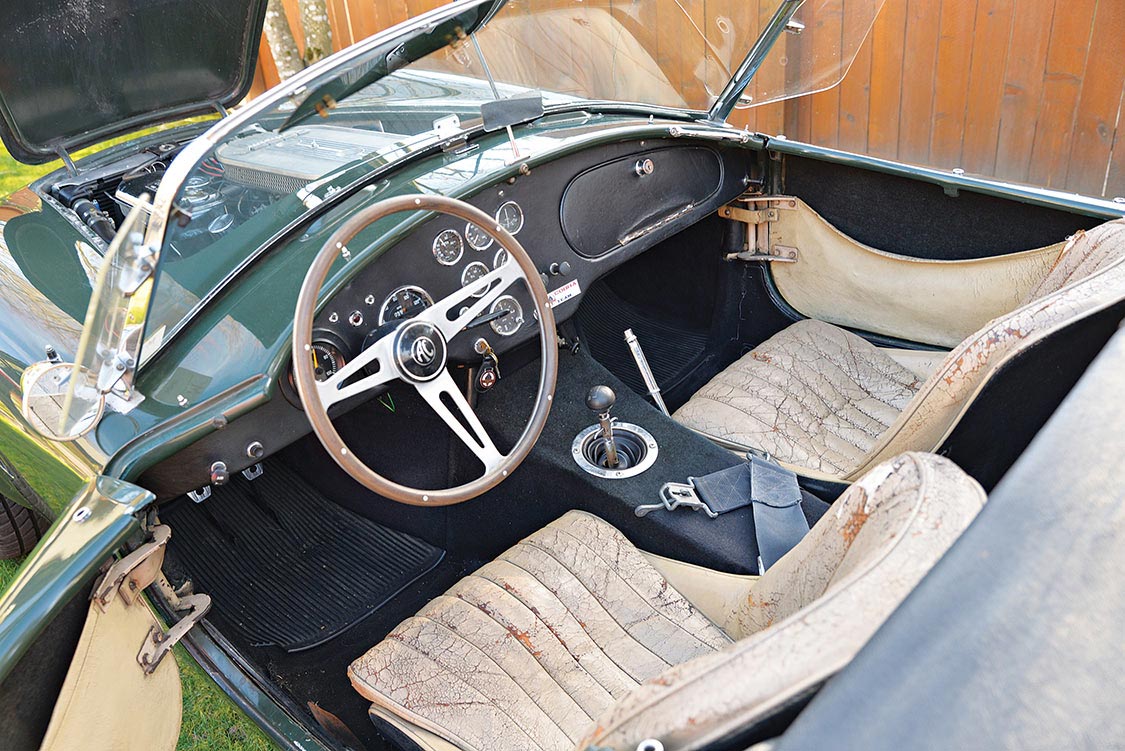
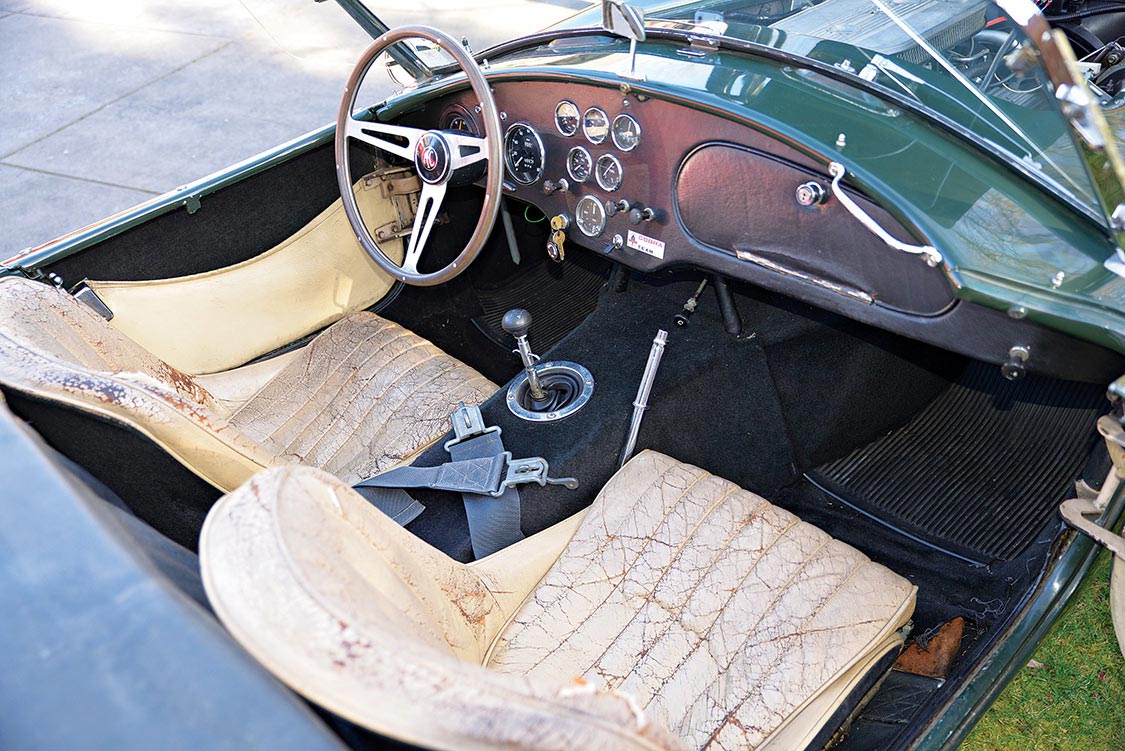
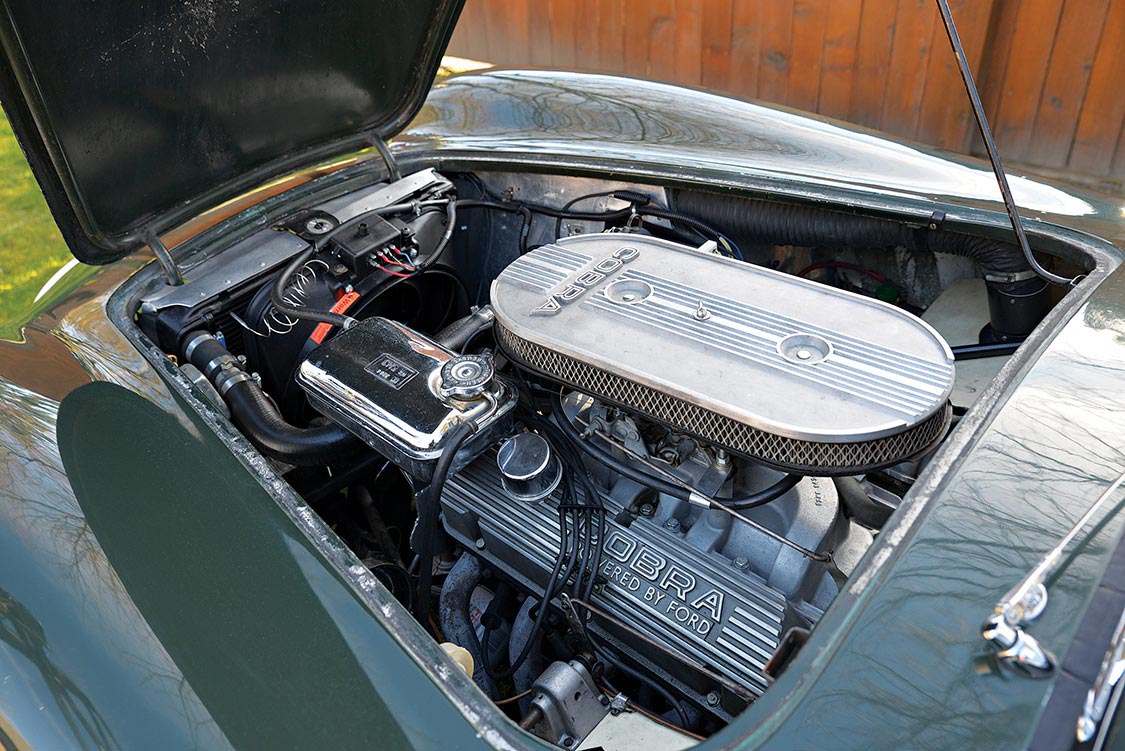
This is where Tom Hendrickson of Portland, Oregon comes in. “I was going to college in Nampa, Idaho in the spring of 1966 and a friend of mine, Chuck Nolti, had a brand new Sunbeam Tiger. While talking to a car dealer in Boise we were told that a doctor in Emmett (Idaho) had a Shelby Cobra, so we drove over to have a look at it,” Hendrickson says.
As it turned out, the doctor still had both Cobras. When they got to his house, they asked about his 289 Cobra. That’s when they found out he had two cars and not only was he open to showing them off, he offered them each a ride, first in the 289 car and later in the 427 car.
“I don’t know what ride Chuck got, but I know what kind of a ride I got,” said Tom. “As soon as we were moving, he got on it in first gear and the car immediately went up to 65 mph with a great deal of smoke and noise. By then I was really impressed. After a very fast ride through the countryside at speeds up to 120 mph, and narrowly avoiding an accident, he pulls over and offers the car to me to drive back to his house.”
Once they got back to the house, Tom had to buy the 289 car, so he asked about the cost. The bottom line was $4,400, which was what Dr. Holvorson had depreciated on his taxes.
Well, by the end of the day, as you can imagine, Tom was ready to sell everything he owned if there was even a chance of buying this car. This was right before the end of the school year and finals were on, so Tom went back to class determined to raise the money. He sold his Austin-Healey for $1,700. Next he sold all his books and just about everything else he owned.
As soon as we were moving, he got on it in first gear and the car immediately went up to 65 mph with a great deal of smoke and noise. By then I was really impressed.

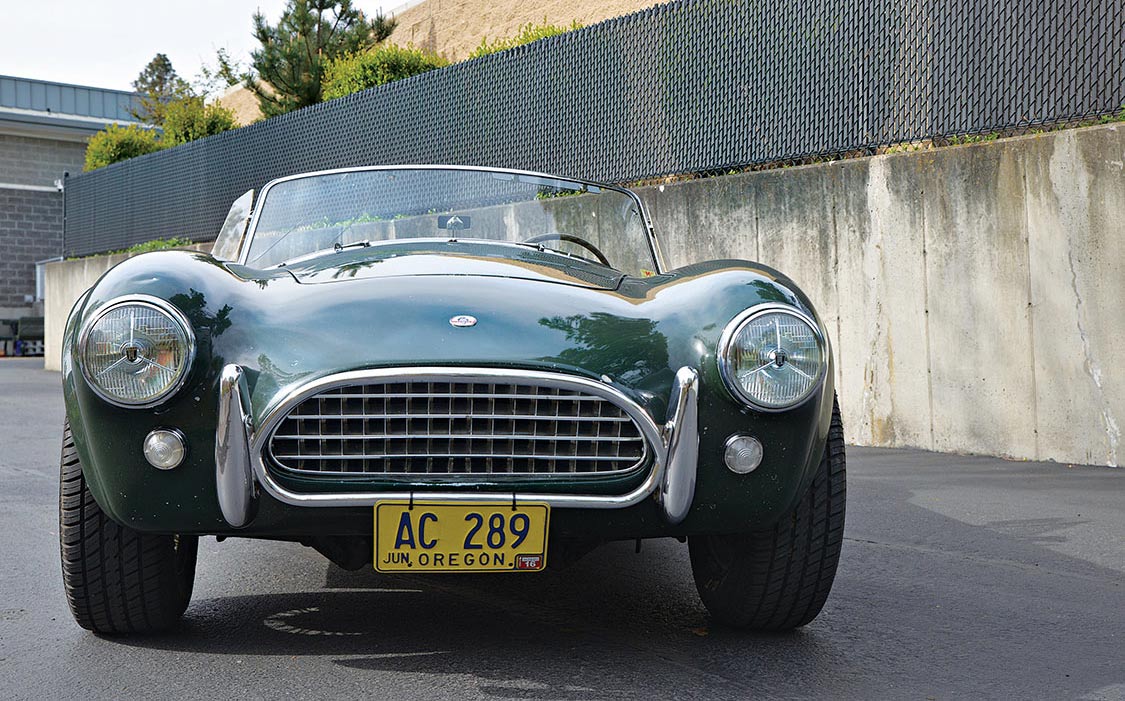

“I actually had to borrow books to get through finals. Oh, and I got a job in a gas station. When I finally got $4000 together, I went back out to see Dr. Holvorson,” said Tom. “I said here’s four grand. I have a job and I’ll be able to pay you the rest soon. I didn’t expect him to give me the car at that point.”
After thinking about it for a few minutes, the doctor said, “Let’s go with $3995. Here’s five dollars back. You’ll need the five bucks for fuel.”
And that was it. At that time the car had some 18,000 miles on it. Unbeknownst to Tom at the time, this car was on its second engine. ‘Seems that Dr. Halvorson and Carroll Shelby took the car out for a test drive and blew up the original engine while racing through the central California oil fields.
Tom drove the car as a daily driver for several years and got to see the doctor a lot at all the autocrosses and events.
“We had a very active club in Idaho,” said Tom. “We went to Montana for hill climbs and we went to Nevada for speed events and economy events.
According to Tom, this car did not work at all with the dual four barrel carburetors on an autocross; all it would do was flood out. So to get around this he kept the engine at around 4,000 rpm, and just used the clutch to get around the corners, which made for some interesting times.
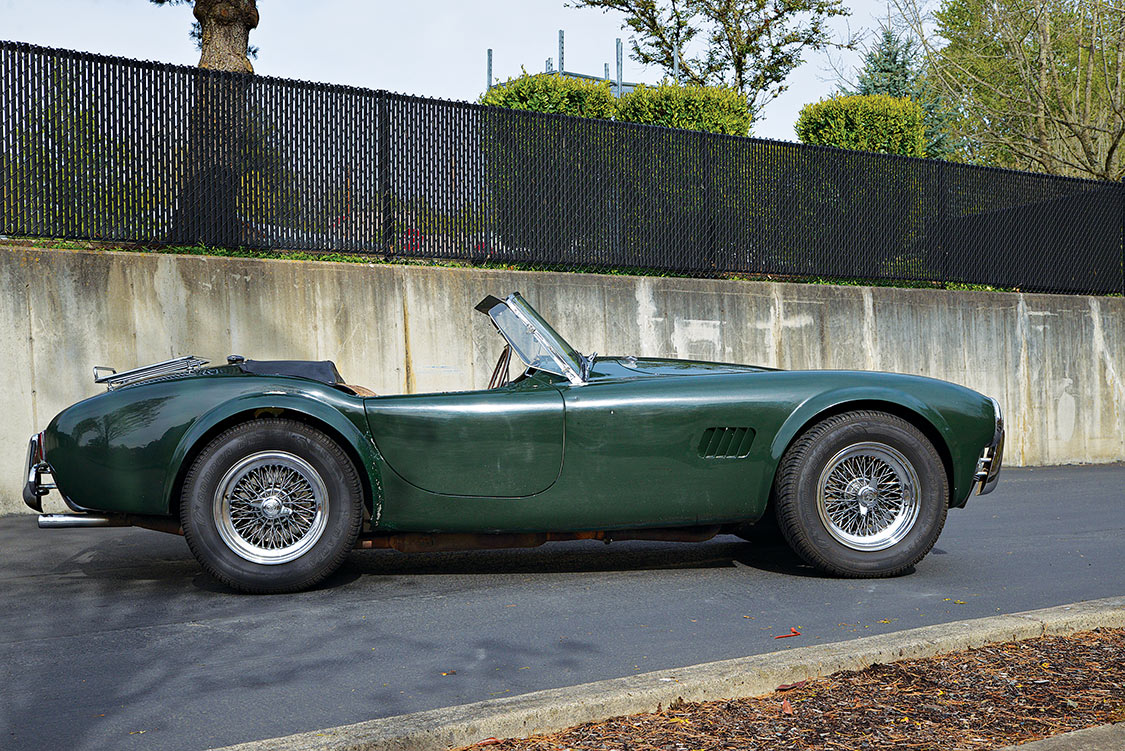
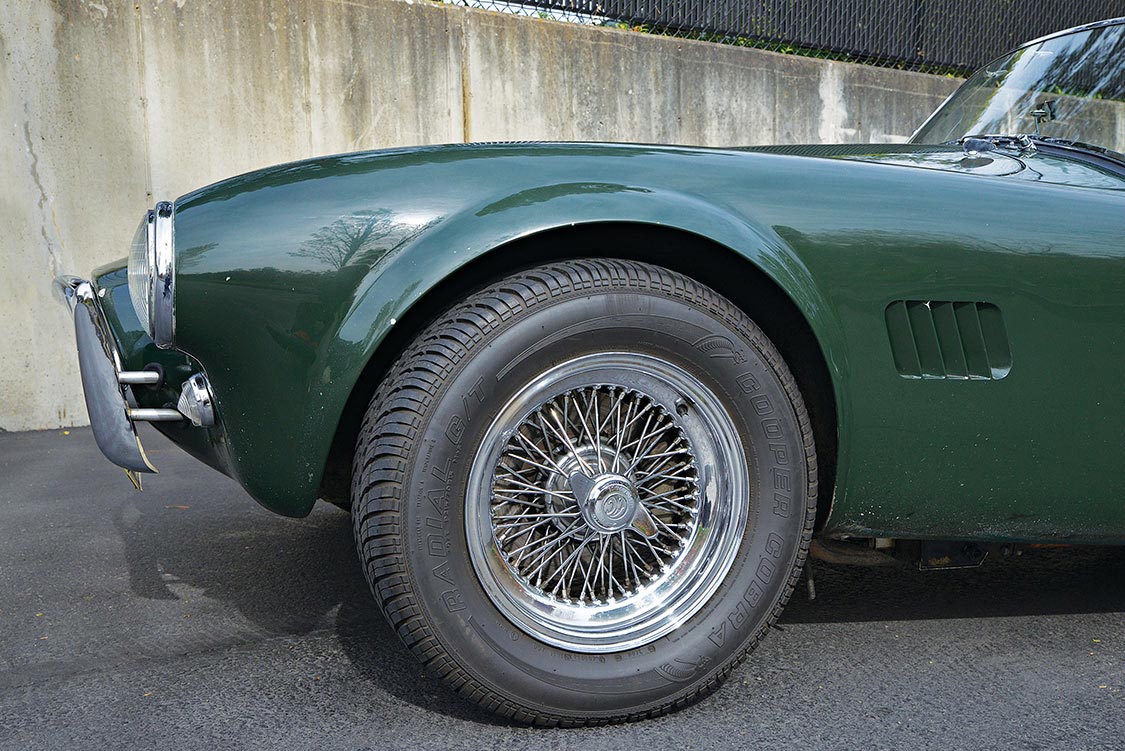
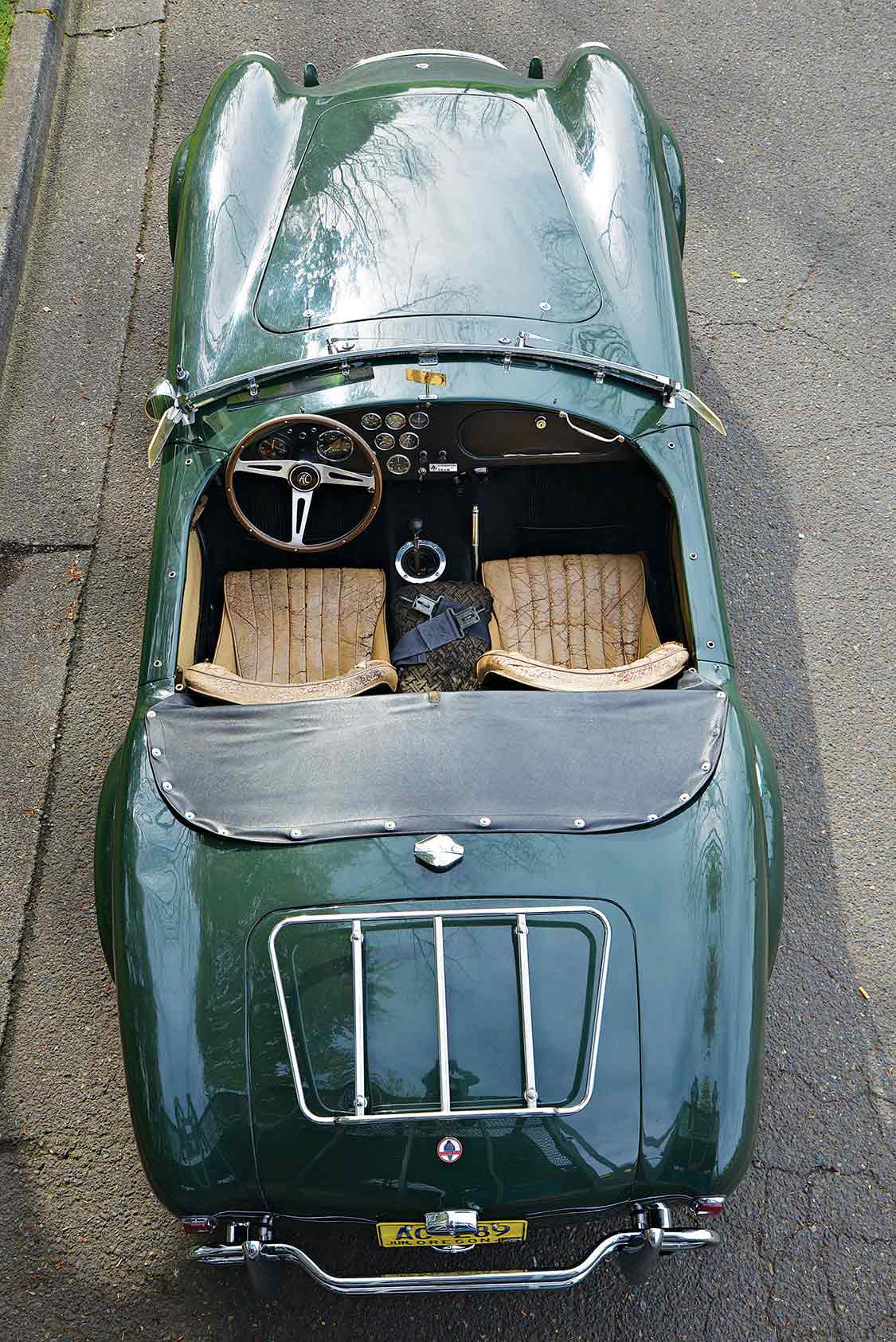
Despite its competition history, the car has never been wrecked. However, there have been some minor body modifications. Normally the 289 cars have flat wheel flares and they are known as slab sides. Dr. Halvorson had been drag racing this car and the rear tires were hitting the fenders, so he had an old aircraft mechanic, who was experienced at working with aluminum, flare out the rear fenders for additional room and it created a nice rounded look.
Years later when Tom was at an autocross, a guy backed into one of the headlights and put a small dent in the aluminum. During the repair work, Tom had the two front flares done, so all four wheel lips match. Also the paint was redone at this time.
The engine is a 438-hp, 289 cubic inch V8, featuring a Crane cam and Mondello heads. The wheels are 6-inch chrome wires, and the car still has its original luggage rack. The front and rear copper badges were removed and as the powered by Ford side emblems for a smoother custom look.
Today all 289 Cobras are very desirable and rarely come onto the market, and when they do they bring a great deal of money. They have great looks, a well-documented history, and they are great fun to drive. The car is in its original condition and it has never been restored, which really adds to its value.
Tom is the second owner of this car and he’s only had it 49-years, and he’s still driving it!
In 1960, retired race car driver and winner at Le Mans, Carroll Shelby designed a small sports car that would use the AC cars from England with Ford’s new small block V-8 engine. The way it worked was to ship the engines to England where they were installed in the AC Ace, and then the car was shipped to Shelby’s shop in Los Angeles.
The original Cobras, of which there were only 75 built, came with the 260-hp engine bolted to a four-speed transmission, and weighed in at 2,100-pounds. Estimated top speed was somewhere around 140 mph. However, it wasn’t long before the 289 was available from Ford, and Shelby quickly switched over to the new engine. Race prepared, the new 271-hp, 289-cid V-8 could produce up to 370 h.p., and now it was a whole different ballgame. In the CSX 2000 series, approximately 580 Shelby 289 Cobras were sold. This would have been between 1963 and 1965, and CSX 2182 would have been one of those cars.
Share Link